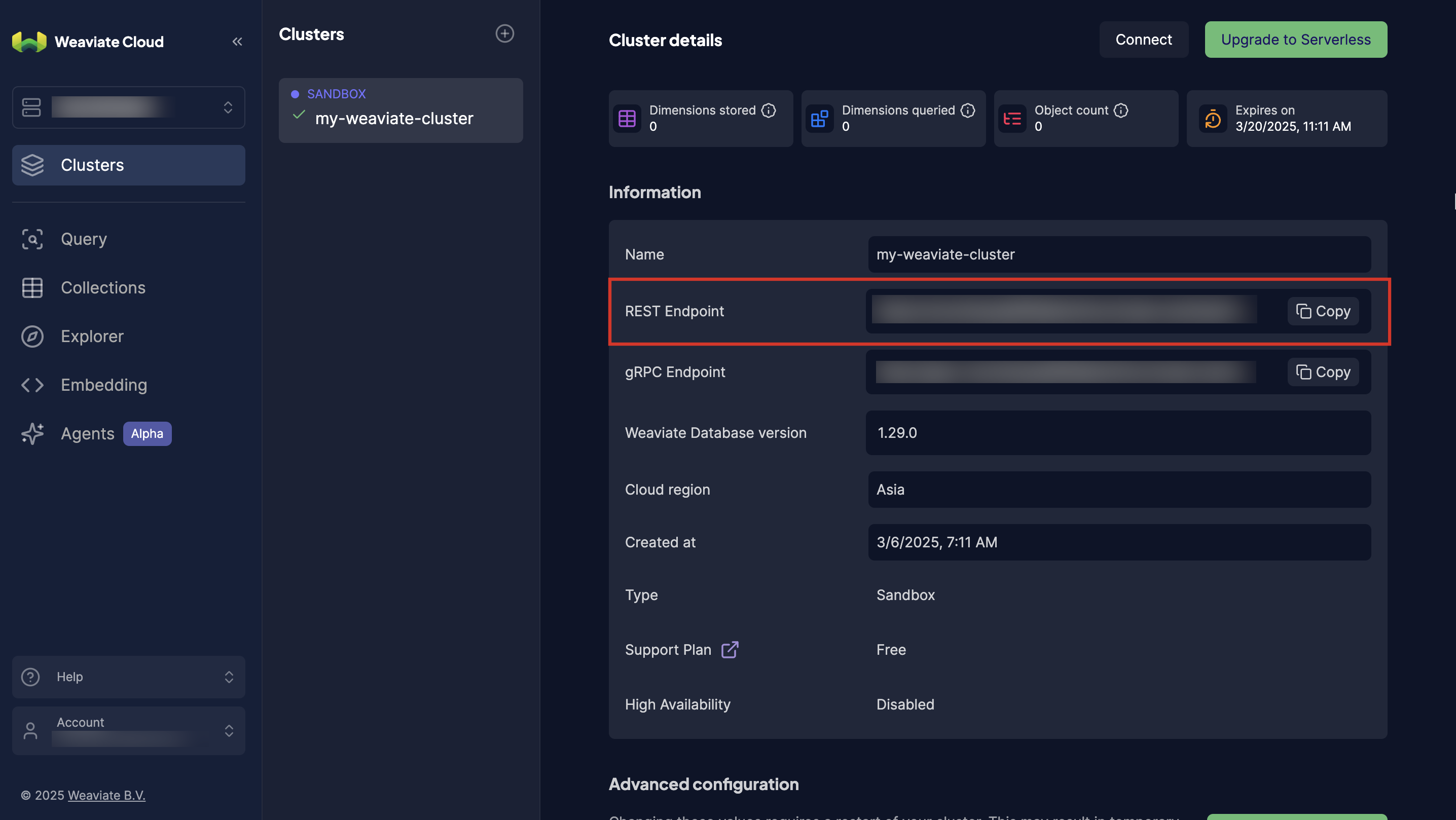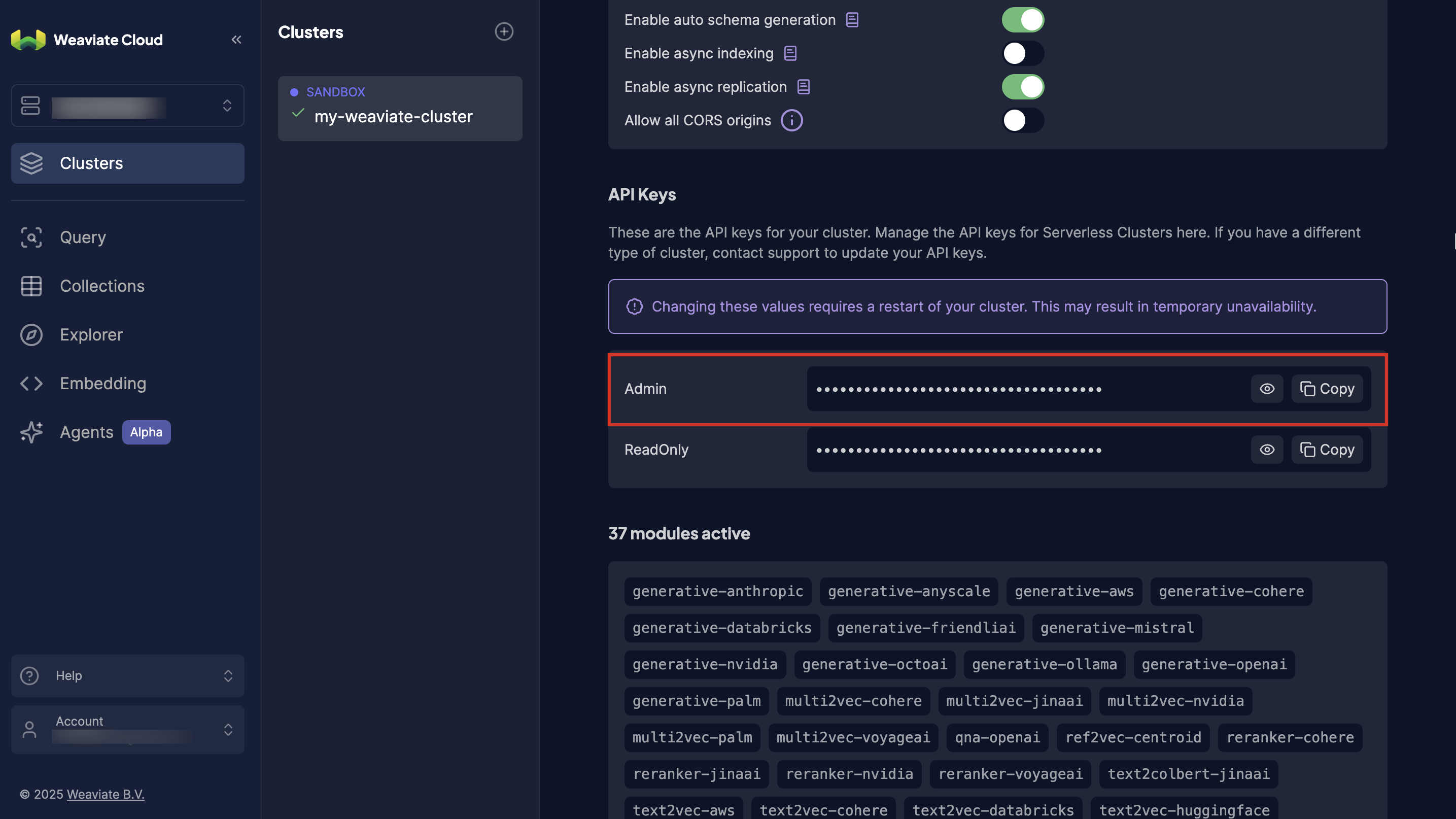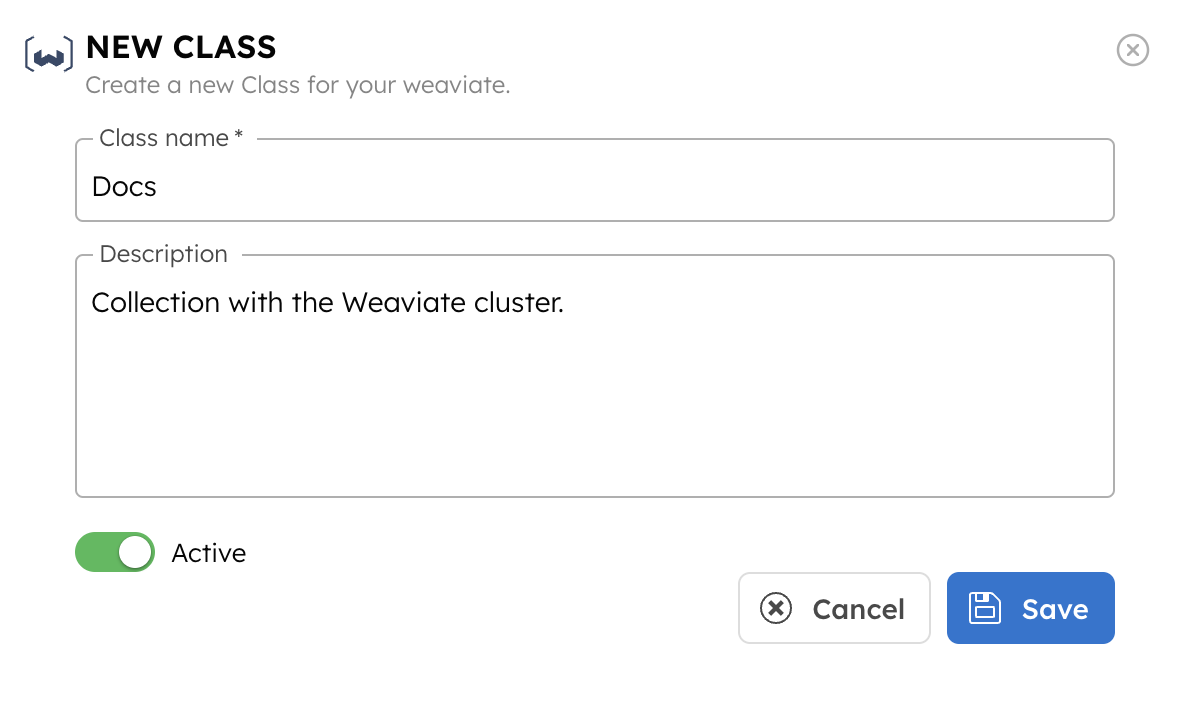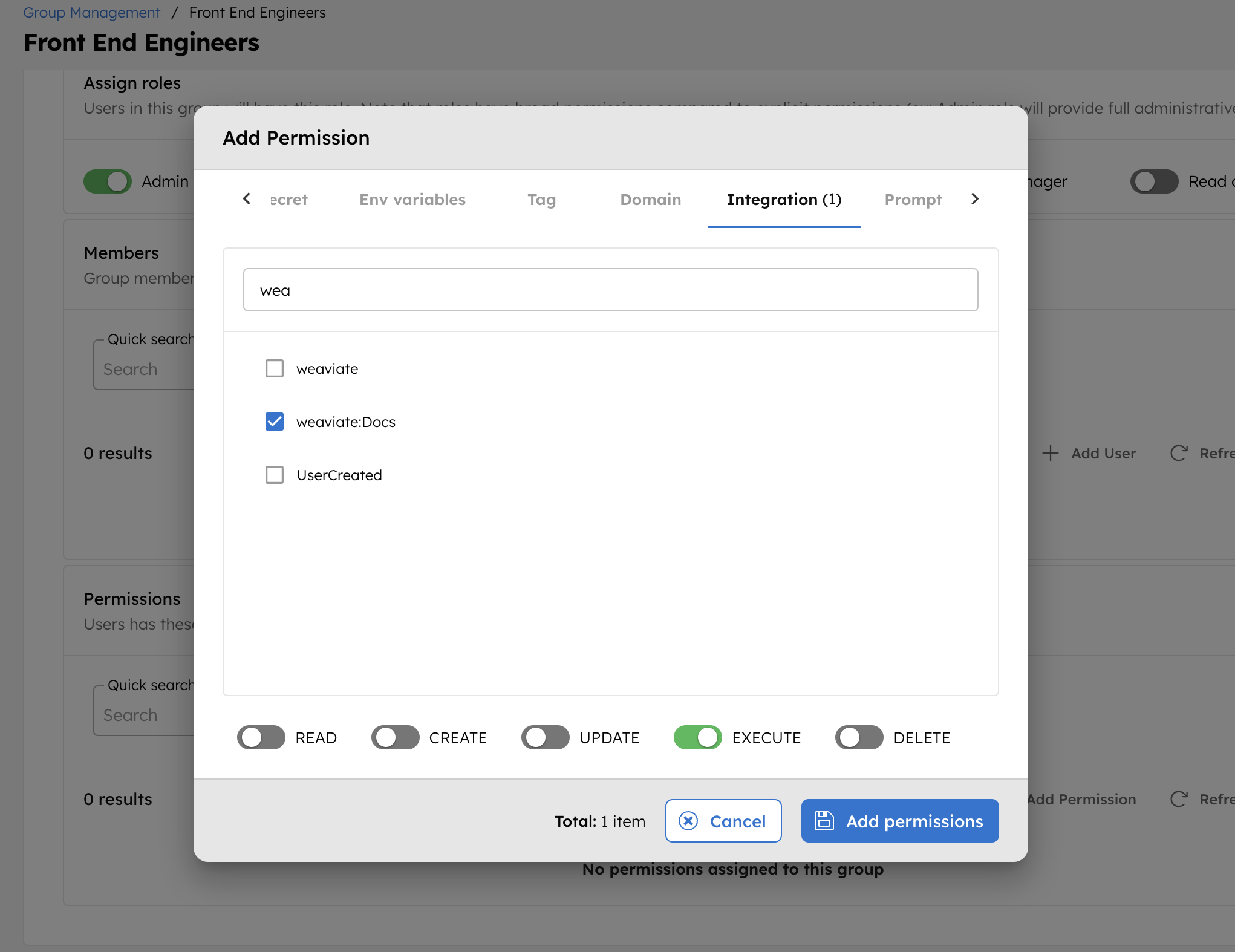Weaviate Integration with Orkes Conductor
To use LLM embedding tasks in Orkes Conductor, you must integrate your Conductor cluster with the necessary vector database providers. This guide explains how to integrate Weaviate with Orkes Conductor. Here’s an overview:
- Get the required credentials from Weaviate.
- Configure a new Weaviate integration in Orkes Conductor.
- Add collections to the integration.
- Set access limits to the vector database to govern which applications or groups can use it.
Step 1: Get the Weaviate credentials
To integrate Weaviate with Orkes Conductor, retrieve the API key and endpoint from the Weaviate Console.
For Weaviate Cloud:
- Sign up for Weaviate Cloud.
- Create a cluster.
- Create a collection within the cluster.
To get the API key and endpoint:
- Sign in to the Weaviate Console.
- Select your cluster and go to Cluster details > Information.
- Copy the REST Endpoint.

- Go to Cluster details > API Keys, and select + Create API Key.
- Enter a Name and select the Role as admin.
- Select Create, and copy/download the key.

If you are using Weaviate locally, set up a local instance and retrieve the API key and endpoint.
Step 2: Add an integration for Weaviate
After obtaining the credentials, add a Weaviate integration to your Conductor cluster.
To create a Weaviate integration:
- Go to Integrations from the left navigation menu on your Conductor cluster.
- Select + New integration.
- In the Vector Databases section, choose Weaviate.
- Select + Add and enter the following parameters:
| Parameters | Description |
|---|---|
| Integration name | A name for the integration. |
| API Key | The API key from the Weaviate cluster. |
| Endpoint | The REST Endpoint from the Weaviate cluster. |
| Description | A description of the integration. |

- (Optional) Toggle the Active button off if you don’t want to activate the integration instantly.
- Select Save.
Step 3: Add Weaviate collections
Once you’ve integrated Weaviate, the next step is to configure specific collections.
To add a collection to the Weaviate integration:
- Go to Integrations and select the + button next to the integration created.

- Select + New Collection.
- Enter the Collection name and a Description.

- (Optional) Toggle the Active button off if you don’t want to activate the collection instantly.
- Select Save.
This saves the classes for future use in AI tasks within Orkes Conductor.
Step 4: Set access limits to integration
Once the integration is configured, set access controls to manage which applications or groups can use the databases.
To provide access to an application or group:
- Go to Access Control > Applications or Groups from the left navigation menu on your Conductor cluster.
- Create a new group/application or select an existing one.
- In the Permissions section, select + Add Permission.
- In the Integration tab, select the required vector database providers and toggle the necessary permissions.
- Select Add Permissions.

The group or application can now access the vector database according to the configured permissions. With the integration in place, you can now create workflows using AI/LLM tasks.
To store data in a vector database, an embedding is to be generated by an AI model. You must also integrate an AI model provider of your choice to use this integration in workflows.